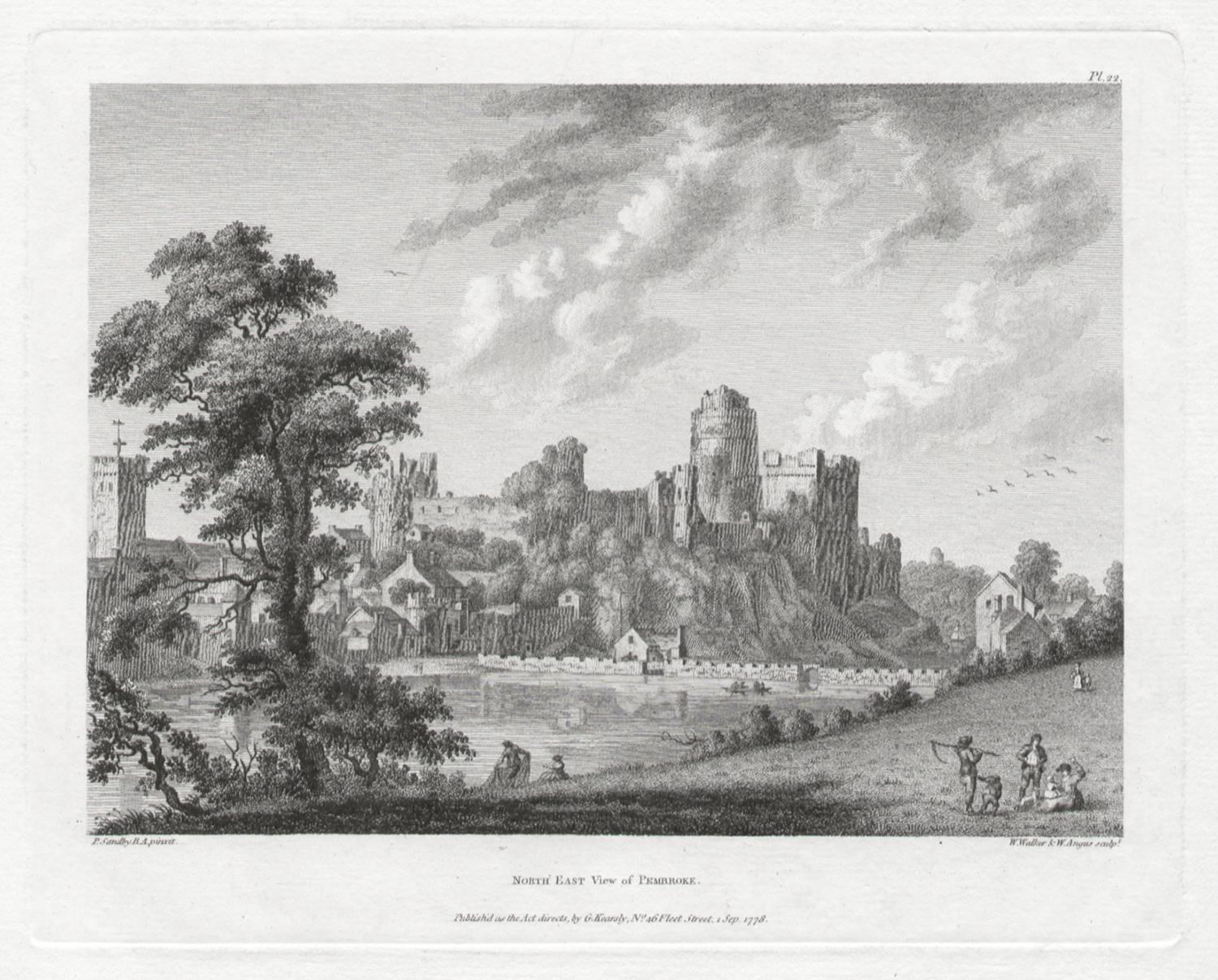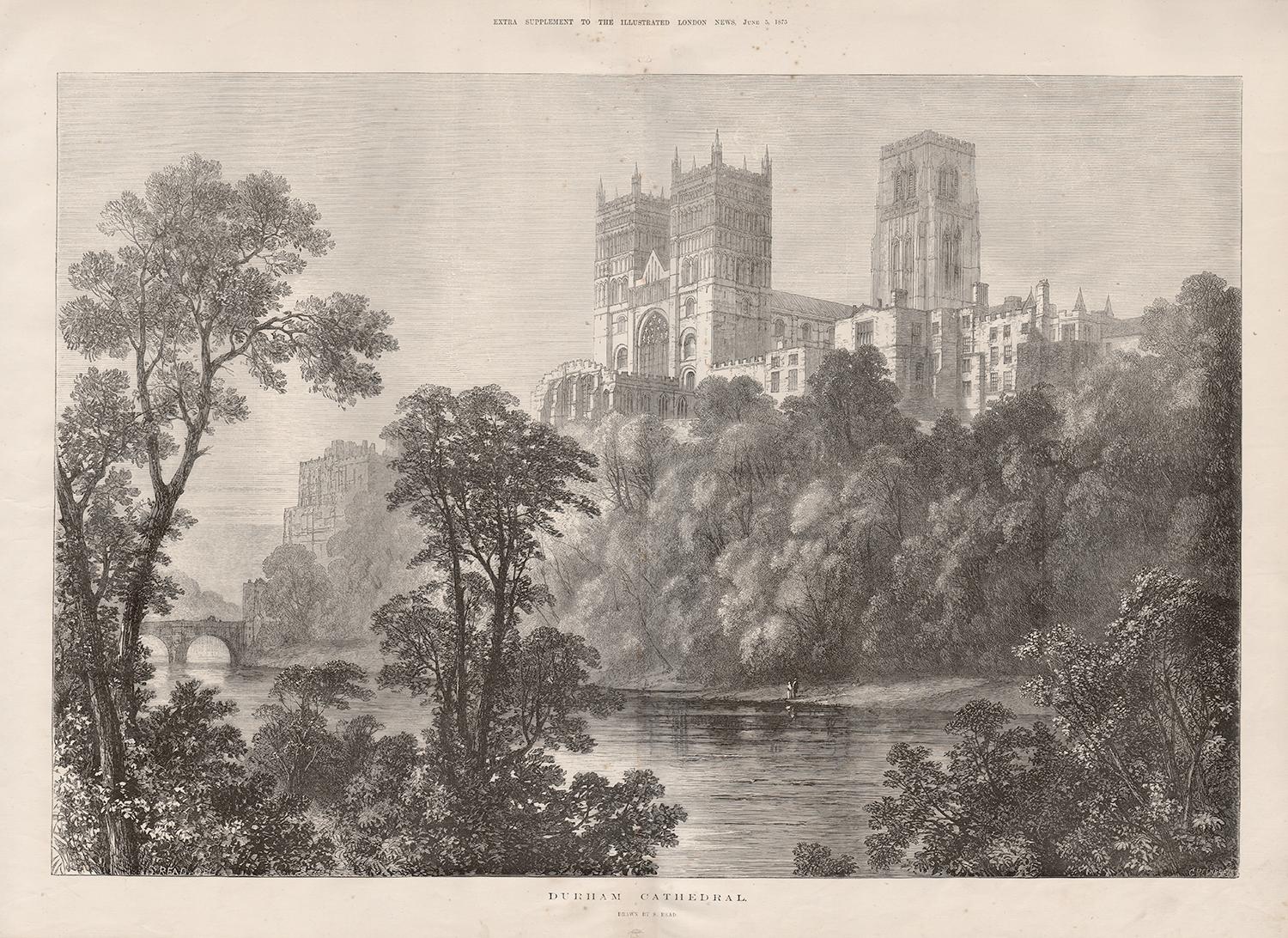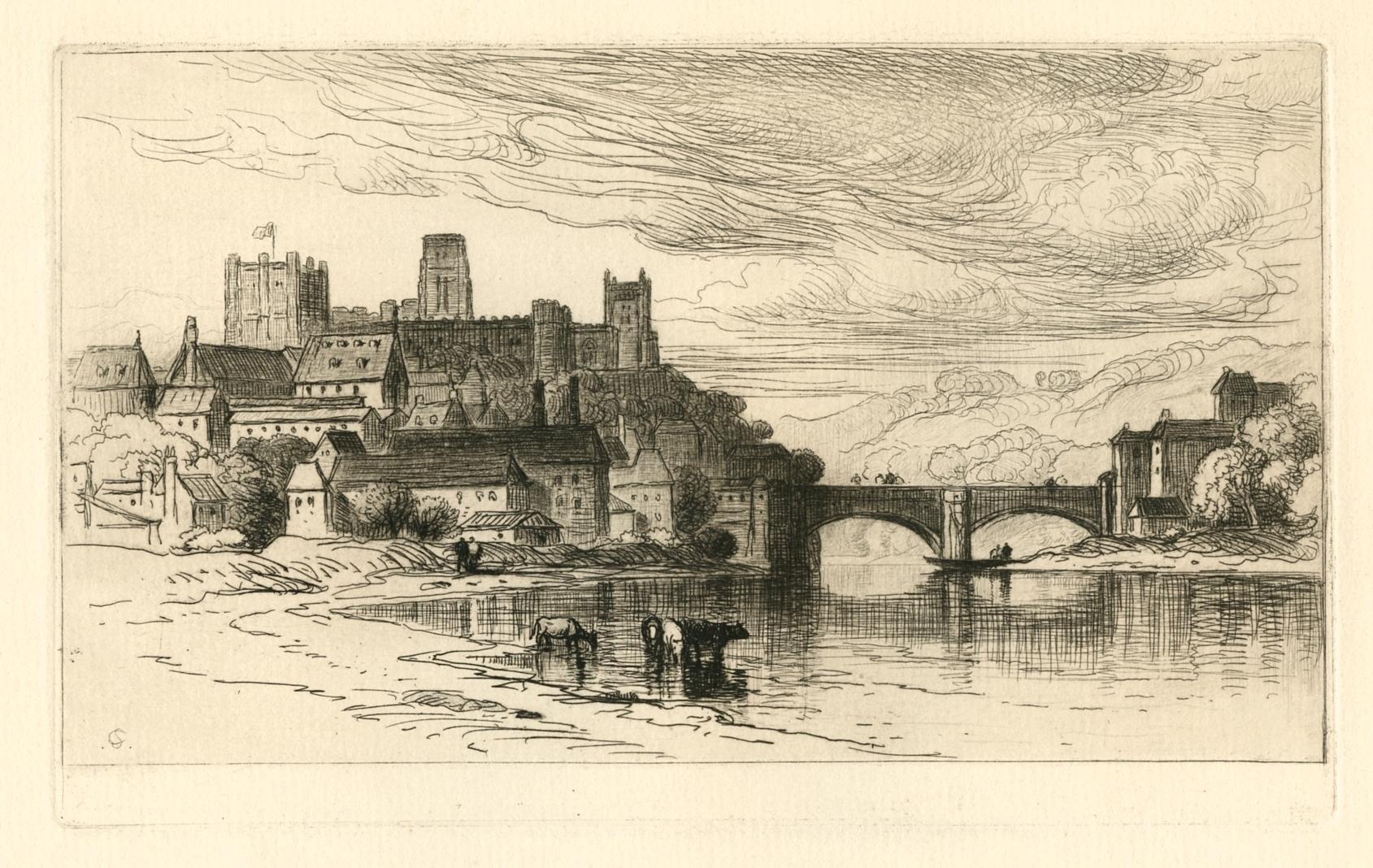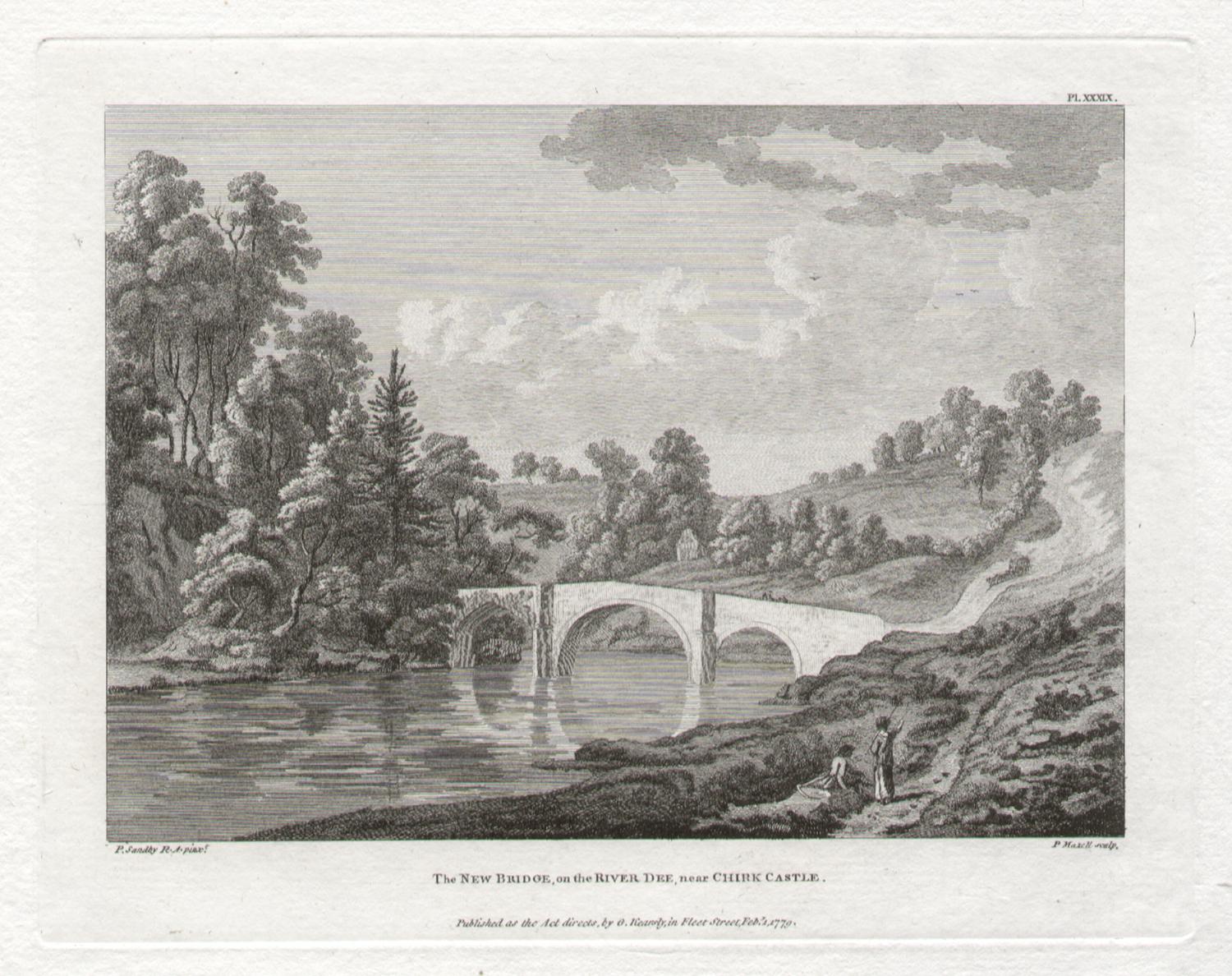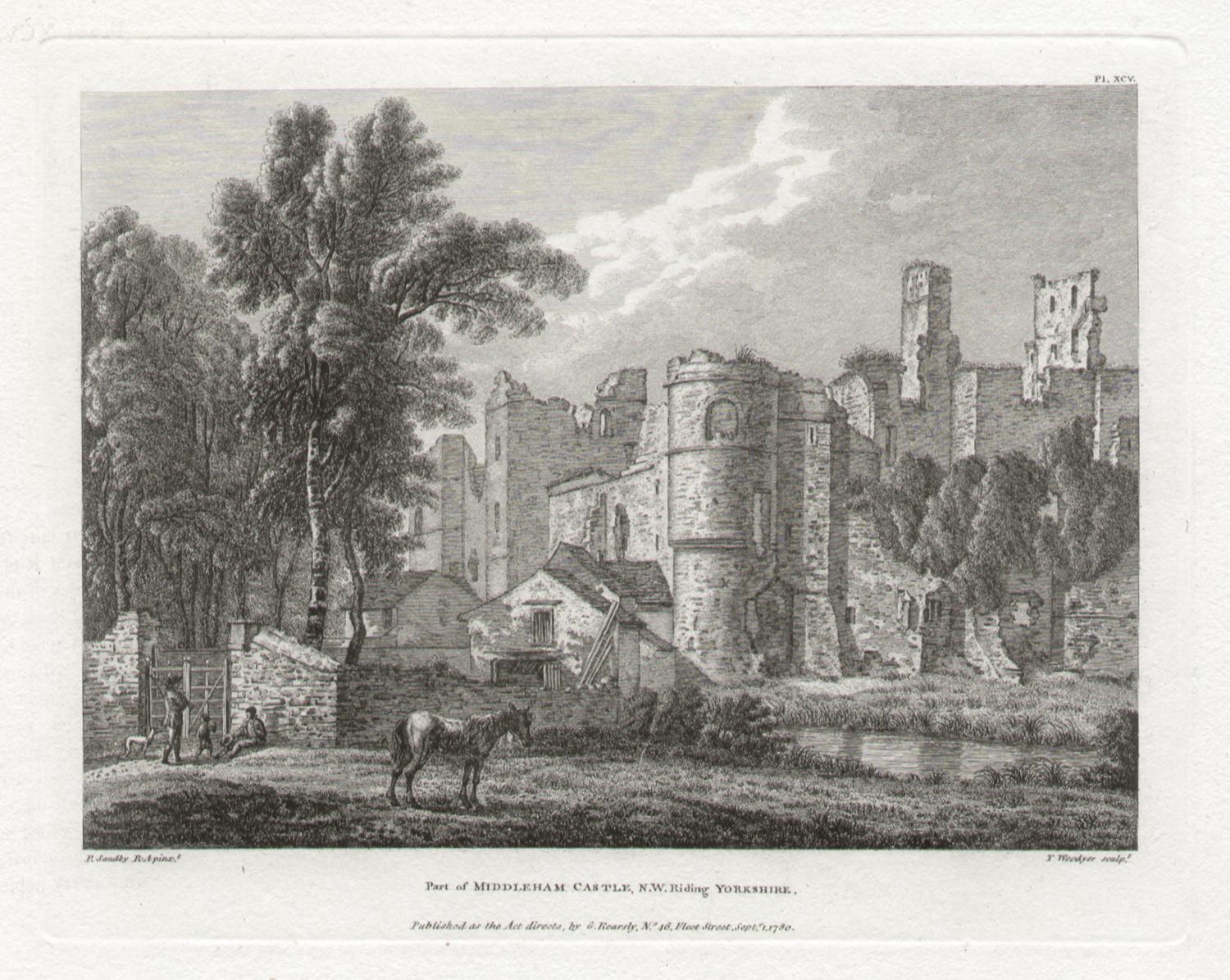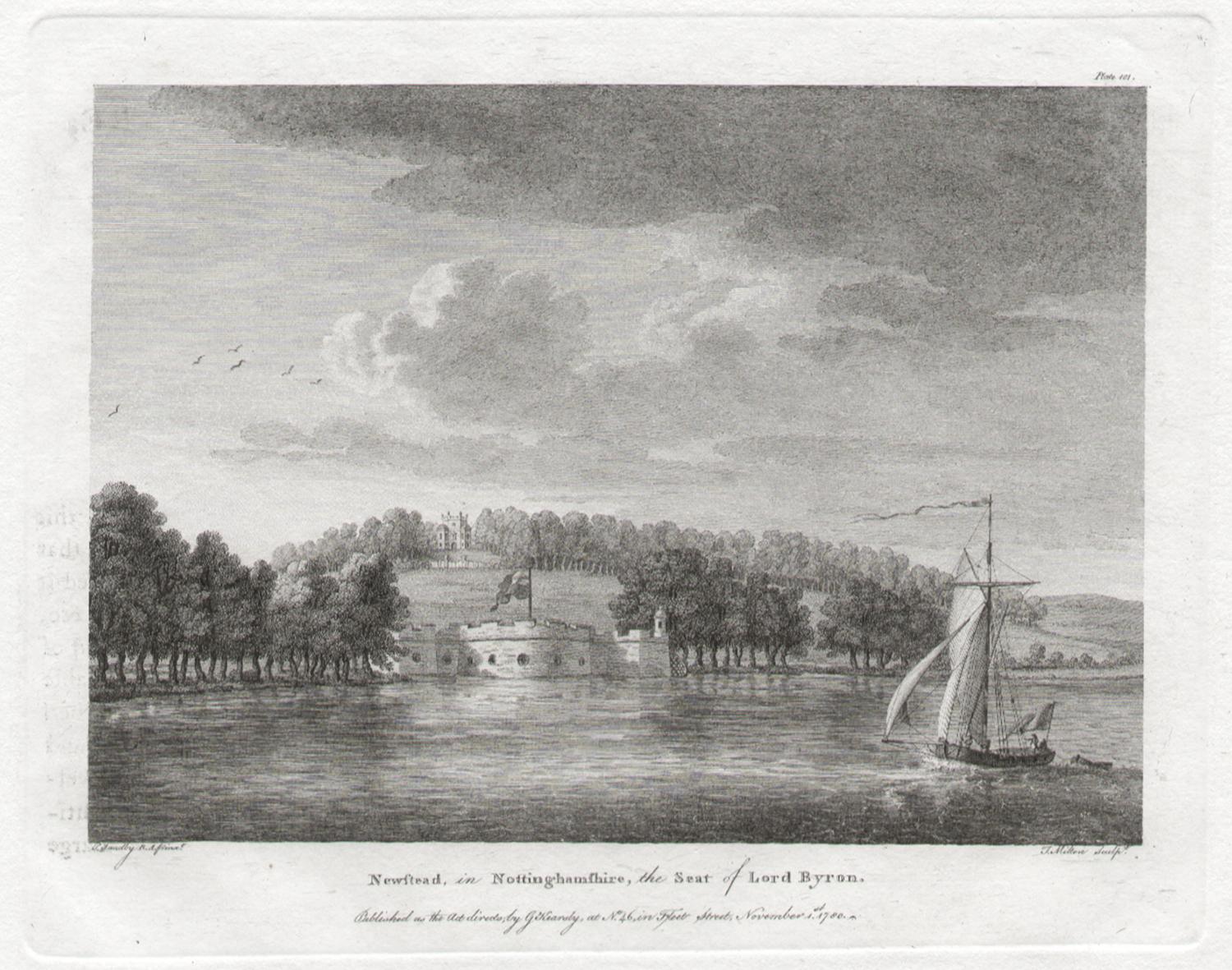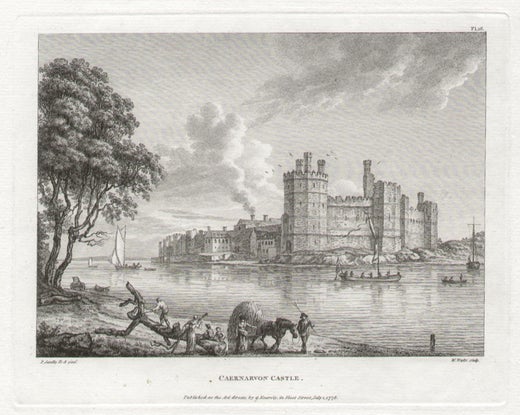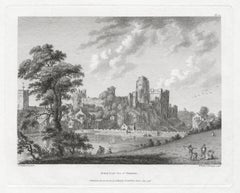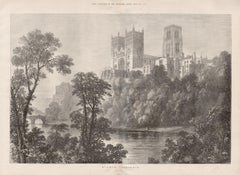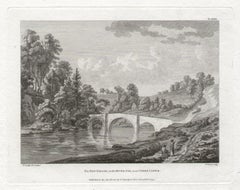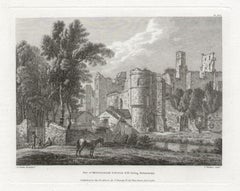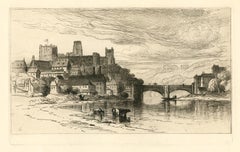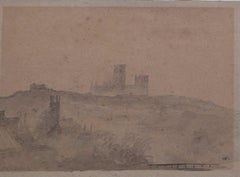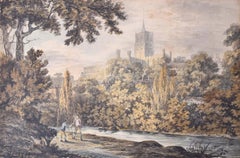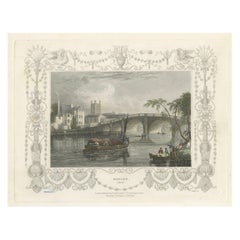Items Similar to Durham. Paul Sandby C18th English landscape engraving
Want more images or videos?
Request additional images or videos from the seller
1 of 3
Paul SandbyDurham. Paul Sandby C18th English landscape engraving1780
1780
$95
£72.35
€83.29
CA$136.14
A$148.96
CHF 76.86
MX$1,783.76
NOK 975.80
SEK 914.23
DKK 621.97
About the Item
'Durham'
Engraving by F Chesham after Paul Sandby (1731-1809).
From Paul Sandby's 'The Virtuosi's Museum, Containing Select Views in England, Scotland, and Ireland', published by George Kearsley.
Paul Sandby was an important English landscape watercolourist. Accompanied by original descriptive text.
160mm by 205mm (platemark)
220mm by 265mm (sheet)
- Creator:Paul Sandby (1731 - 1809, English)
- Creation Year:1780
- Dimensions:Height: 8.67 in (22 cm)Width: 10.44 in (26.5 cm)
- Medium:
- Movement & Style:
- Period:
- Condition:Faint off setting to left of image - see photo. A couple of tiny spots.
- Gallery Location:Melbourne, AU
- Reference Number:1stDibs: LU124426900812
Paul Sandby
Sandby was born in Nottingham and moved to London in 1745. He and his brother Thomas first worked in the military drawing department at the Tower of London, later working on a military survey of new roads and bridges in the Highlands. On leaving this post in 1751 he spent some time living with his brother who had been appointed Deputy Ranger of Windsor Great Park. There he assisted his brother, and made a series of drawings of the castle, town and neighbourhood. In 1760 he settled in London where he contributed to the first exhibition of the Society of Artists where he regularly exhibited until the foundation of the Royal Academy in 1768, beoming one of its founder members. In same year he was appointed chief drawing master to the Royal Military Academy at Woolwich. He died at his house in Paddington on 7 November 1809, and was buried in the burial ground of St George’s, Hanover Square. He was described in his obituaries as “the father of modern landscape painting in watercolours”.
About the Seller
5.0
Platinum Seller
Premium sellers with a 4.7+ rating and 24-hour response times
Established in 2005
1stDibs seller since 2019
617 sales on 1stDibs
Typical response time: 3 hours
- ShippingRetrieving quote...Shipping from: Melbourne, Australia
- Return Policy
Authenticity Guarantee
In the unlikely event there’s an issue with an item’s authenticity, contact us within 1 year for a full refund. DetailsMoney-Back Guarantee
If your item is not as described, is damaged in transit, or does not arrive, contact us within 7 days for a full refund. Details24-Hour Cancellation
You have a 24-hour grace period in which to reconsider your purchase, with no questions asked.Vetted Professional Sellers
Our world-class sellers must adhere to strict standards for service and quality, maintaining the integrity of our listings.Price-Match Guarantee
If you find that a seller listed the same item for a lower price elsewhere, we’ll match it.Trusted Global Delivery
Our best-in-class carrier network provides specialized shipping options worldwide, including custom delivery.More From This Seller
View AllNorth East View of Pembroke, Wales. Paul Sandby C18th landscape engraving
By Paul Sandby
Located in Melbourne, Victoria
'North East View of Pembroke'
Engraving by William Watts (1752-1851) and William Angus after Paul Sandby (1731-1809).
From Paul Sandby's 'The Virtuosi's Museum, Containing Select ...
Category
18th Century Naturalistic Landscape Prints
Materials
Engraving
Durham Cathedral, C19th English topographical engraving, by Samuel Read, 1873
By Samuel Read
Located in Melbourne, Victoria
'Durham Cathedral'
Wood-engraving after Samuel Read. From 'The Illustrated London News'.
Samuel Read was an English illustrator who provided many illust...
Category
Late 19th Century Naturalistic Landscape Prints
Materials
Engraving
The New Bridge, On The River Dee, Wales. Paul Sandby C18th landscape engraving
By Paul Sandby
Located in Melbourne, Victoria
'The New Bridge, On The River Dee, Near Chirk Castle'
Engraving by Peter Mazell After Paul Sandby (1731-1809).
From Paul Sandby's 'The Virtuosi's Museum, Containing Select Views in...
Category
18th Century Naturalistic Landscape Prints
Materials
Engraving
Middleham Castle, Yorkshire. Paul Sandby C18th English landscape engraving
By Paul Sandby
Located in Melbourne, Victoria
'Part of Middleham Castle, NW Riding, Yorkshire'
Engraving by T Woodyer after Paul Sandby (1731-1809).
From Paul Sandby's 'The Virtuosi's Museum, Containing Select Views in England...
Category
18th Century Naturalistic Landscape Prints
Materials
Engraving
Newstead in Nottinghamshire. Paul Sandby C18th landscape engraving
By Paul Sandby
Located in Melbourne, Victoria
'Newstead in Nottinghamshire, the Seat of Lord Byron'
Engraving by Thomas Malton after Paul Sandby (1731-1809).
From Paul Sandby's 'The Virtuosi's Museum, Containing Select Views i...
Category
18th Century Naturalistic Landscape Prints
Materials
Engraving
Newstead Priory, Nottinghamshire. Paul Sandby C18th English landscape engraving
By Paul Sandby
Located in Melbourne, Victoria
'Newsted Priory, Nottinghamshire'
Engraving by W Walker And W Angus After Paul Sandby (1731-1809).
From Paul Sandby's 'The Virtuosi's Museum, Containing Select Views in England, Sc...
Category
18th Century Naturalistic Landscape Prints
Materials
Engraving
You May Also Like
"Durham, England" original etching
By Samuel Colman
Located in Henderson, NV
Medium: original etching. This impression was published in 1880 by the American Art Review. The American Art Review was a lavishly produced revue featuring original etchings by leadi...
Category
1880s Prints and Multiples
Materials
Etching
Panoramic view across Durham with Durham Cathedral by Sir Albert Richardson PRA
Located in London, GB
Sir Albert Richardson PRA
Panoramic view across Durham
Monochrome Wash
22 x 33 cm
A unique monochrome wash composition depicting a panoramic view across the Durham skyline. Richard...
Category
20th Century Realist Landscape Drawings and Watercolors
Materials
Watercolor, Gouache, Ballpoint Pen
Prospect of Durham from the River 19th Century Watercolour
Located in London, GB
To see our other views and maps of England - including London, Durham, Oxford and Cambridge, scroll down to "More from this Seller" and below it click on "See all from this Seller" -...
Category
19th Century Realist Landscape Drawings and Watercolors
Materials
Watercolor
Antique engraving of Henley-on-Thames with bridge and church, Tombleson, ca.1832
Located in Langweer, NL
Antique engraving of Henley-on-Thames with bridge and church, Tombleson
This finely detailed antique engraving depicts Henley-on-Thames, one of the most picturesque and historically...
Category
Antique 1830s British Prints
Materials
Paper
View of Oxford engraving by Bluck after Turner for Ackermann
Located in London, GB
To see our other Oxford and Cambridge pictures, including an extensive collection of works by Ackermann, scroll down to "More from this Seller" and below it click on "See all from th...
Category
1810s Prints and Multiples
Materials
Aquatint
Castle (University College, Durham) engraving after Samuel and Nathaniel Buck
By Samuel & Nathaniel Buck
Located in London, GB
To see more, scroll down to "More from this Seller" and below it click on "See all from this Seller."
after Samuel Buck (1696 - 1779) and Nathaniel Buck (active 1724 - 1759)
View of Durham Castle...
Category
Late 18th Century Landscape Prints
Materials
Engraving
More Ways To Browse
English Engravings
Vintage Baby Portraits
Vintage Boxing Painting
Vintage Womens Pins
18th Century Dog Paintings
Acrylic Flower Sculpture
Bay Area California Artist
Celotto Afro
Charles Church
Charpentier Georges
Cycladic Art
Emperor Penguin
English Country House Painting
Expressionist Clay Sculpture
French Military Paintings
Frilli Gallery
Glass Cube Sculpture
Grinling And Gibbons
